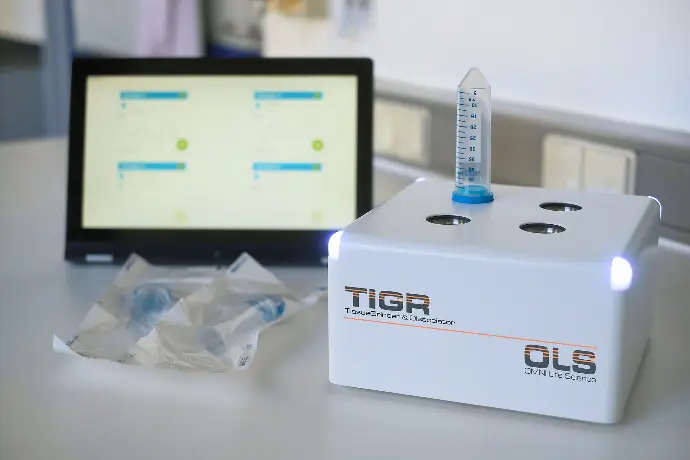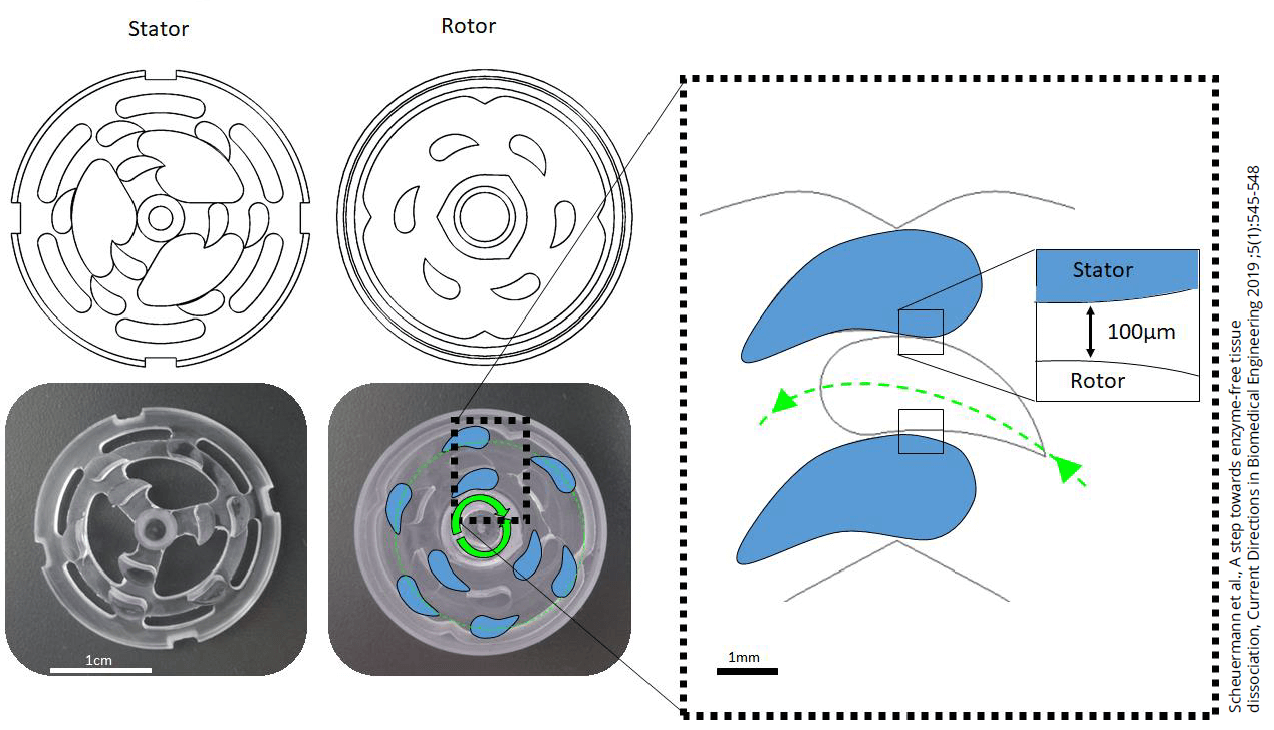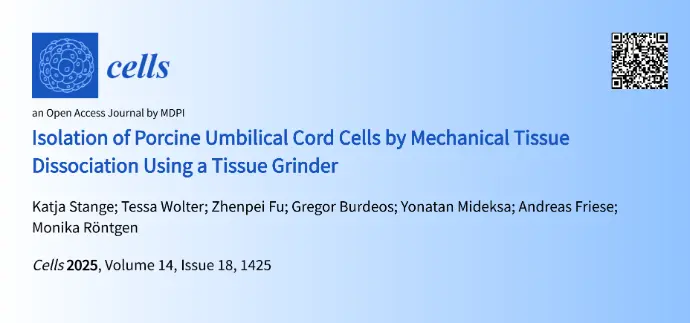Enzyme-free and Gentle Tissue Dissociation
TIGR Tissue Grinder and Dissociator
The TIGR Tissuel Grinder & Dissociator is a novel semi-automated tool designed for the mechanical dissociation of tissues into single-cell suspensions. By using a purely mechanical process, it avoids the cleavage of membrane proteins, making it ideal for applications that require intact cellular structures. With the ability to process multiple samples simultaneously, the Tissue Grinder & Dissociator ensures high throughput and reproducible results, making it an essential tool for research in cell biology and tissue analysis.
Principle of TIGR Technology
Key Features
Rapid, Enzyme-Free Dissociation
Gentle mechanical dissociation is 5–15 times faster than enzyme-based methods.
Improved Cell Integrity and Purity
The streamlined, single-use workflow minimizes contamination risk.
Higher Throughput
This benchtop device can process up to four samples simultaneously, boosting efficiency.
User Friendly
Benefit form our easy-to use software and ready-to use protocols for various sample types.
Applications
Gentle single-cell dissociation is essential for accurate single-cell analysis across various applications.
The TIGR helps preserve cell integrity, ensuring reliable and reproducible results in these applications.

Tissue Models - Spheroids, Organoids
Single Cell Counting
Single Cell Sequencing
Isolation of Primary Cells
Cell Line Development
Flow Cytometry
Processing of Tissue Biopsies
Latest News
New Insights into umbilical cord-derived cells
A recent study highlights the power of the TIGR Tissue Grinder and Dissociator for processing umbilical cord tissue - delivering impressive results.
The method enabled the fast and reproducible isolation of high yields of viable mesenchymal stromal cells (MSCs). These cells not only proliferated strongly but also displayed key hallmarks of MSCs, such as the expression of characteristic surface markers, colony-forming ability, and the capacity to differentiate into adipogenic, chondrogenic, and osteogenic lineages.
This approach provides reliable access to high-quality cells for use in therapies, biotechnological applications, and tissue engineering.
Technology - How it works

The TIGR system enables fast, enzyme-free tissue dissociation compatible with standard cell strainers. It includes a benchtop instrument and a sterile, disposable 50mL grinding tube with a rotor-stator unit featuring counter-rotating teeth.
With adjustable parameters—such as duration, rotation, and speed—researchers can tailor protocols easily through the TIGR software. The entire process takes less than two minutes, far quicker than traditional enzyme-based methods that can take up to an hour.
The grinding unit features interlocking rows of teeth that move against each other. As the grinding teeth rotate freely, they draw the tissue sample into the interstitial space, applying controlled shearing and milling forces to gently dissociate single cells from the tissue. The fin-shaped geometry and spacing between the teeth enable efficient isolation of viable cells. The stator remains stationary, while the rotor moves bidirectionally based on customizable programming—allowing precise, user-defined control over the tissue dissociation process.


Optimized Workflow:
Tissue dissociation with the TIGR system follows a straightforward, standardized protocol. Under sterile conditions, the tissue sample is placed between the rotor and stator, along with an appropriate liquid medium for cell suspension. A cell strainer and collection tube are then positioned above the grinding compartment. The tube is transferred from the sterile environment and inserted upside down into a designated TIGR slot, where the rotor engages with the slot’s drive mechanism.
Once the grinding protocol is initiated via the TIGR software, the tube is removed, turned upright, and the resulting suspension flows through the cell strainer. Final steps—centrifugation and resuspension—yield a high-quality, ready-to-use single-cell suspension.
This efficient, user-friendly workflow eliminates the need for enzymatic dissociation, reducing time, labor, cost, and minimizing the risk of error.
Established Protocols
| Using default protocol | With protocol optimization |
|---|---|
| Liver | Skin* |
| Lung | FFPE* |
| Heart | Brain |
| Kidney | Urinary bladder |
| Spleen | Thyroid |
| Stomach | Tonsil |
| Colon | Prostate |
| Pancreas | Endometrium |
| Lymph node | Ovary |
| Rectum |
The left column lists tissues with established TIGR protocols and strong user support, allowing new users to proceed without major adjustments. The right column shows compatible tissues that may require some protocol customization; we offer support and data for these as needed.
*Skin and FFPE tissues benefit from added dissociation enzymes.
If your tissue type isn’t listed, let us know—we’re happy to collaborate on testing and data generation.
Register here for recent updates, events and trainings for TIGR Tissue Grinder & Dissociator
Webinar Registration
